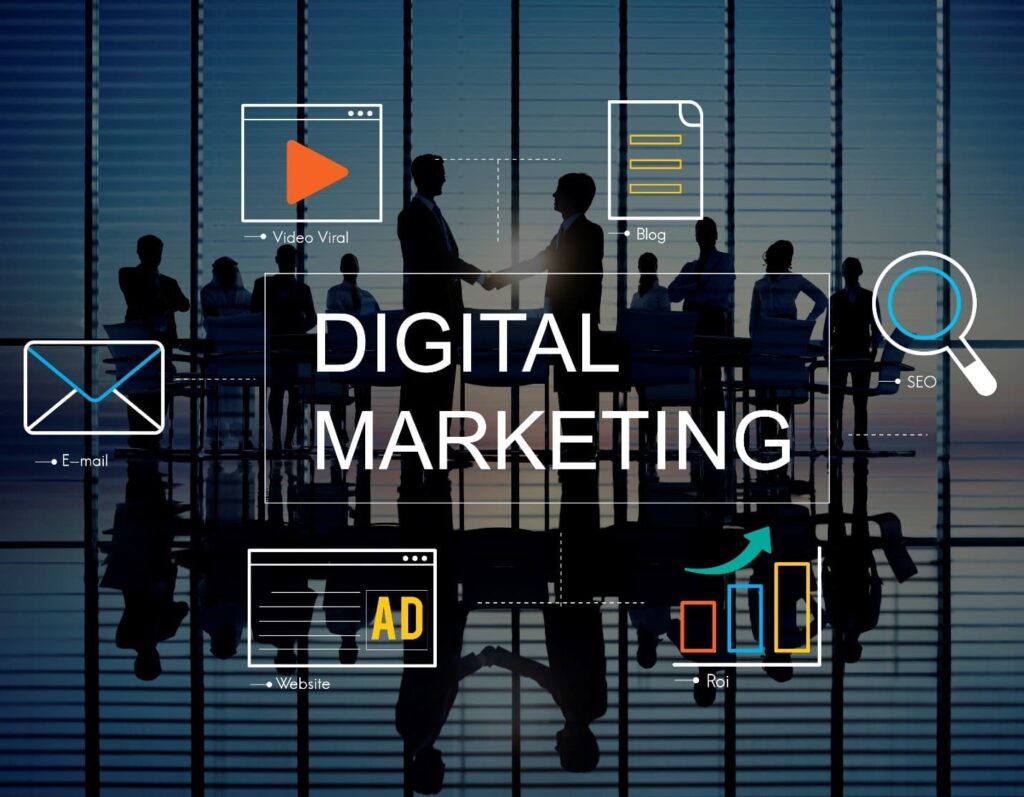In the contemporary, rapidly evolving realm of commerce, small enterprises encounter the formidable task of vying for prominence amidst their more substantial and long-standing counterparts. To thrive and grow, small businesses must implement effective marketing strategies. Small businesses often grapple with a pivotal decision – to allocate their efforts towards digital marketing or embrace traditional marketing methods. Each avenue boasts unique strengths and the optimal blend can fluctuate based on a business’s nature and intended demographic. This piece delves into the pros and cons of digital and conventional marketing strategies for small enterprises.
Harnessing the Potential of the Digital Domain: Digital Marketing
1. Cost-Effective Advertising
The realm of digital marketing provides cost-efficient advertising solutions, rendering it accessible to small businesses operating within constrained budgets. Online advertising platforms, such as Google Ads and social media advertising, allow businesses to set budgets, target specific demographics, and pay per-click or impression. This flexibility ensures that every dollar spent on advertising delivers maximum value.
2. Targeted Audience Reach
Digital marketing’s paramount advantage lies in its capability to target specific audiences precisely. Businesses can gather data on their audience’s demographics, interests, and behavior through tools like Google Analytics and Facebook Insights. This information allows them to create tailored content and advertisements that resonate with potential customers. You can see examples of customized content and advertising at https://playfortunefor.fun.
3. Measurable Results
Digital marketing provides immediate access to performance metrics. Smaller enterprises can monitor the performance of their campaigns in real time, facilitating swift adjustments and optimizations. This data-centric approach empowers businesses to make well-informed choices regarding their marketing tactics.
4. Enhanced Brand Visibility
With most consumers turning to the internet for information and shopping, a strong online presence is essential. Digital marketing tactics such as search engine optimization (SEO) and content marketing can boost a small business’s visibility on search engines and social media platforms, increasing brand awareness.
Traditional Marketing: The Time-Tested Approaches
1. Tangibility and Trust
Conventional marketing techniques, such as print ads, direct mail, and brochures, provide prospective customers with a tangible and tactile engagement. Holding a physical marketing piece can instill a sense of trust and credibility that digital content sometimes lacks.
2. Localized Targeting
Traditional marketing approaches like billboards, local radio ads, and community events can be highly effective for small businesses serving a local or niche market. These methods allow businesses to connect with their immediate community personally and effectively.
3. Audience Diversity
While digital marketing often targets a specific demographic, traditional marketing has the potential to reach a broader and more diverse audience. Television and radio ads, for example, can be seen or heard by people of various age groups and backgrounds.
4. Lasting Impressions
Printed materials, like business cards and flyers, can leave a lasting impression on potential customers. These physical artifacts can be kept for reference, serving as a constant reminder of a small business’s products or services.

Finding the Right Balance
The choice between digital and traditional marketing should be seen as something other than an either-or decision. Instead, small businesses should consider a balanced approach that leverages both strengths. Here are some tips for finding the right mix:
- Know Your Audience: Understand your target audience’s preferences and behavior. This will aid you in ascertaining which marketing channels prove most effective in reaching your target audience.
- Set Clear Goals: Define specific marketing objectives, whether increasing website traffic, generating leads, or boosting sales. Establishing clear objectives will serve as a compass for directing your marketing strategy.
- Allocate Resources Wisely: Evaluate your budget and allocate resources to various marketing channels based on their potential return on investment (ROI).
- Measure and Adapt: Continuously monitor the performance of your marketing efforts and be prepared to adjust your strategy based on what works best for your business.
Small businesses that balance digital and traditional marketing can create a powerful marketing mix that reaches a wide audience while maintaining a personalized approach. You can find out how different online casinos use a personalized approach at https://playfortunefor.fun/online-casinos/low-minimum-deposit/.
In conclusion, the choice between digital and traditional marketing strategies for small businesses is not about one being superior to the other but leveraging their unique strengths to achieve business goals. Through a comprehensive comprehension of their target audience, the establishment of precise objectives, and the prudent allocation of resources, small businesses can craft a marketing strategy that optimizes their reach and influence within the fiercely competitive business.